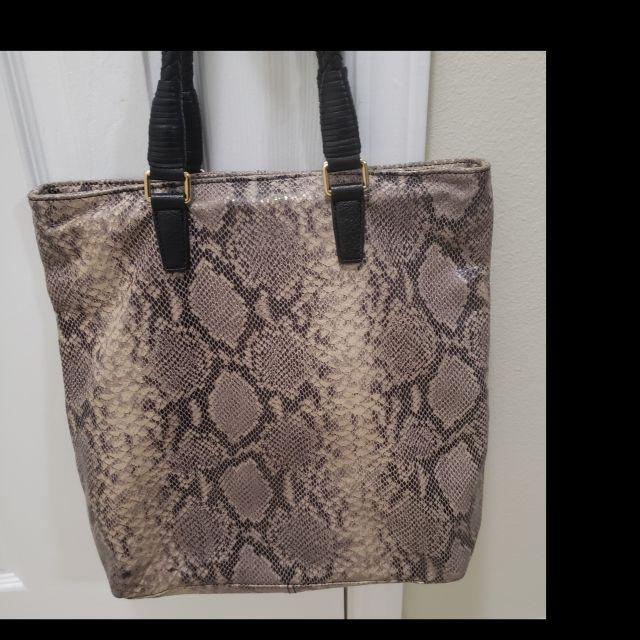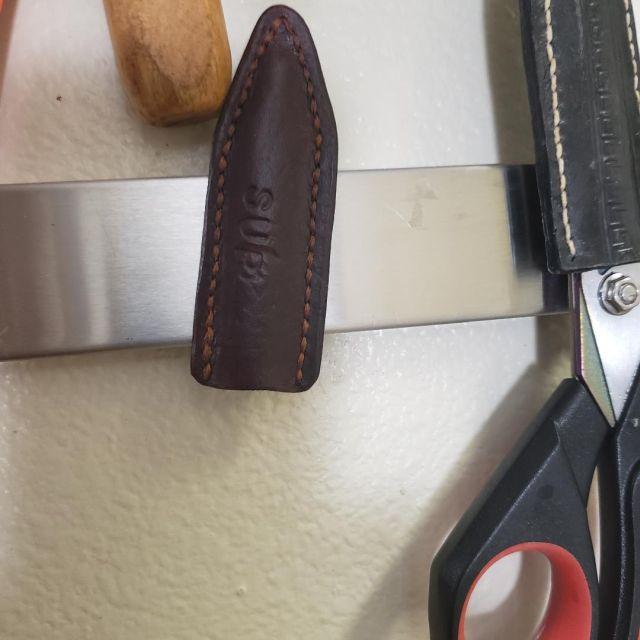-
Posts
1,283 -
Joined
Content Type
Profiles
Forums
Events
Blogs
Gallery
Everything posted by SUP
-
@MtlBiker not finding that pattern. I know it was some sort of bookmark. But when I search, there are so many, I am at a loss. @Northmount exactly. Spammers and hackers have so many ways of causing harm! I never download anything from emails that I receive. and I check the raw message to see where most emails arrive from as well. Hackers are so good these days that they can create very authentic looking emails and logos of well known companies, banks for example. This was something that I was not even looking for.. a bookmark that looked like a fun thing. Now when I look for it to send @MtlBiker the link, I cannot find it. The default damage happened to one of my earlier printers a long time ago, maybe 10-12 years - that I could reset. Simpler world then, I guess and easier solutions.
-
@MtlBiker It does happen. I have heard of it happening which is why I am usually careful with downloads. This one slipped through. I will try to remember where found that pattern. I promptly deleted it so will need to search for it. The thing is, I would have thought my old printer just broke down but in between 2 printing jobs, and not within one? The dieselpunk.ro one had 44 pages printed, in Poster format! They all printed perfectly and then this one, a couple of pages, were all out of kilter. Too much of a co-incidence to be a sudden printer failure, I think. @fredk you were lucky to find repair people who knew what to do. I thought that would be the solution too. @MtlBiker I will look for that pattern and send you the link if I find it. Anyway, I got a nice new printer.
-
@BurkhardtYes I got it from Etsy. @toxo I was wondering about that too. Other seller give a couple of free patterns too but only a few and very simple ones. This site gives many of them, of larger more difficult projects and I wondered if there is a catch.
-
@MtlBiker like @fredk said, I suspect there was a computer virus. Luckily it was an old printer so don't mind too much replacing it. I did not bother to take it to a repair place, too old for all that. So asked around, checked with techie acquaintances and then just replaced. I know it was that download because just prior to that, I had downloaded and printed a dieselpunk.ro pattern which was fine. Then this pattern and suddenly everything went wonky. @Chakotay I will try that. Better to wait for a physical pattern than get such problems. This was directed from Etsy though. But I have bought and downloaded other patterns from Etsy and not had any problem. I am going to remain wary of free patterns though. Not getting anything from that site. I would like to make my own patterns and am at the point where I am able add my own details to the patterns I buy. I hope to make my own pattern soon, I have some ideas and the leather for it as well. Thank you all, for your guidance and suggestions.
-
I came across a site which offers many free patterns and tutorials. Has anyone tried anything from this site? @leatherbagpattern3574 A google search will take you to the YouTube site - no individual videos so could not embed here. I ask because some weeks ago, I downloaded a pattern from Etsy from a seller who has been around for a long time and had very good ratings, but the download damaged my printer settings. Could not get it corrected and had to replace it. I don't want a repeat with my new printer. I would appreciate any information on this.
-
A classic doctor's bag pattern is available here as well. Just saw it and saved it for future use today! https://www.etsy.com/listing/939620096/classic-doctors-bag-leather-pattern?click_key=9f94277c8a4bbd4d9a78b816142aa57b6a57b2d6%3A939620096&click_sum=e5fde5c2&external_collection=&pro=1&sts=1
-
That is stunning! A quietly elegant looking book.
-

What else do I need to do to preserve an old snakeskin bag?
SUP replied to SUP's topic in Exotics, Reptiles, Furs and others
Thank you. @Fraulein. I hope so too. -

What else do I need to do to preserve an old snakeskin bag?
SUP replied to SUP's topic in Exotics, Reptiles, Furs and others
Photographs of my snakeskin bag. The conditioner I used was for exotic leathers, including snakeskin. -

What else do I need to do to preserve an old snakeskin bag?
SUP replied to SUP's topic in Exotics, Reptiles, Furs and others
Thank you @Fraulein. I will put up a picture of it. Should have thought of it! -
@TonyVCan' feel any metal in the leather - of course it might be too small to feel with bare fingers. The thread is the same spool that I have used for all the other things I have stitched. The Pro-dye was used for other things as well. This was in the earliest days when I was trying to learn how to use dyes and antiquing, so used both on most things. I have been racking my brain trying to find something different that I did with this piece of leather. @ArkieNewbie you may have a point there..an alternate dimension might end up being the explanation! @Handstitched , missed your comment there... leather from the cow that jumped over the moon.. moon dust!
-
I don't have any iron filings. Will have to see how I can get some. The plastic wrap is a good idea although I have thoroughly cleaned the leather and the conditioner is the same I use for all the other knife sheaths. Let's see. A mystery to solve.
-
I thought the same thing but it appear some metals do become temporarily magnetic in presence of strong magnets and these wall magnets are strong. Might be wrong, of course or the effect might not be enough to hold up even a small sheath like this one. Half the time when I read articles online, I am not sure if they can be relied upon; even the ones that seem to be from what should be reliable sources.
-
@dikman and I have a piece of that cow! My fortune is made. @fredk @Gezzer, some form of soft iron maybe, or metals like Aluminium or nickel or lead. @fredk, that is a good idea. There should be a college somewhere close by with a Physics department where I can show them this. It is such an oddity!
-
Yes it is, isn't it? Now that I think of it, it was one of the first I made, so from a bag of Tandy scraps, if I remember right. Wonder if it is something about the scrap I used. The rest of the treatment was the same as for other knife sheaths. One thing I noticed - if I take the sheath off the strip and re-attach it with the scissors, it does not remain stuck immediately; only after a long while. Several hours or overnight. So the effect comes on slowly. Weirder and weirder.
-
@Sheilajeanne Thank you for that assurance
-
I just attached a new magnetic strip and stuck 2 scissors on it - both in their sheaths. When I take off the larger scissors, it comes off with the sheath. The smaller one however, the sheath sticks to the magnetic strip. It remains there when I move away the scissors. The magnetic strip is brand new and shiny but I cleaned it anyway; cleaned the sheath as well; no difference. I tried in a different section of the strip but it still happens. Does not happen with any of the knives. The sheath is made of the same leather as several other sheaths. It is dyed with pro-dye and then Neatsfoot oil. Same technique as with several others. Thread is the same used on several others as well. The scissors are an old Wiss brand. Does anyone have an idea why this is happening?
-
Uttam says this sounds like animal ill-treatment and that I better explain, so here goes! Simon/Simone Tutu is shedding - always does so in summer. Ergo, when she was startled, she squawked indignantly and scolded me, fluttering around and shedding some feathers. Needless to say, she was petted, given guava and carrots and kept on my shoulder all day. Simone/Simon as I have no idea if male or female; treated as female until enlightened. 'Tutu' means 'parrot'. She sits outside her cage supervising me when I work on leather near her cage.
-

Pre-Cut Leathers or Full Sides (Or Hides)
SUP replied to TanneryNYC's topic in Marketing and Advertising
I prefer cut to order, if possible. and colors - dark greens like forest green and emerald green; pinks - lighter ones, not shocking pinks. These colors are not easily available anywhere. -
@Littlef ditto! If I finish a project without getting discouraged, it is an achievement! But when I see everyone here, making such nice things and then are shown their first attempts as well, it gives me hope! Thank you for that, @Frodo. Just today, I am making my third attempt at a golf cap for my husband - 1st 2 attempts - mistakes big enough that they needed re-doing. Hoping to do it reasonably well this time.. Tossed the 2nd attempt across the room - hit my bird's cage and frightened half the feathers off her!
-
Mineral oil brings back/refreshes faded color. That might help; either mineral oil on its own or in a mix with a little beeswax.
-

Laser cutting and engraving Chrome Tan..What Respirator UPDATE
SUP replied to BDAZ's topic in 3D Printers and Lasers
Thank you for that. it is good to get proper information from a knowledgeable person. -
@BruceGibson. Round knives fan club!
-
Likewise, @BruceGibson.
-
@AlZilla Love the idea. Uttam will be very interested. He used to make electrical items with his father - radios and things from scratch - so will have the knowhow to use this idea. Thank you for that.





